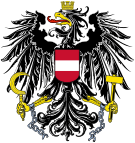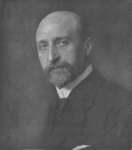From Wikipedia, the free encyclopedia
election results
1927 Austrian legislative election
First party
Second party
Third party
Leader
Ignaz Seipel
Karl Seitz
Karl Hartleb
Party
EL
SPÖ
LB
Leader since
31 May 1922
November 1918
19 May 1927
Last election
82, 44.05%(As Christian Social Party)
68, 39.60%
5, 3.01%
Seats won
85
71
9
Seat change
Popular vote
1,756,761
1,539,635
230,157
Percentage
48.24%
42.28%
6.32%
Swing
Parliamentary elections were held in Austria on 24 April 1927.[1] Christian Social Party and the Greater German People's Party , which won 85 of the 165 seats. However this brief coalition failed to result in any larger proportion of the votes than when the CSP ran alone, losing votes to the Landbund .
[2] [3]
Results [ ]
Party
Votes
%
Seats
+/-
Unity List
1,756,761
48.2
85
–
Social Democratic Party 1,539,635
42.3
71
+3
Landbund for Austria 230,157
6.3
9
+4
Udeverband - Association against Corruption
35,471
1.0
0
New
National Socialist Bloc
26,991
0.7
0
New
Communist Party of Austria 16,119
0.4
0
0
Democratic List
15,112
0.4
0
0
Jewish Party
10,845
0.3
0
0
Party of the Carinthian Slovenes
9,334
0.3
0
0
Nazi Party 779
0.0
0
New
Austrian Small Business Party
251
0.0
0
New
Association of Independent Citizens
60
0.0
0
New
Farmers and Traders of All Types Party
11
0.0
0
New
Invalid/blank votes
35,907
–
–
–
Total 3,677,433 100 165 0
Registered voters/turnout
4,119,626
89.3
–
–
Source: Nohlen & Stöver
Popular vote
EL
48.20%
SDAP
42.31%
LB
6.33%
Other
3.16%
Parliamentary seats
EL
51.52%
SDAP
43.03%
LB
5.45%
References [ ]
Categories :
1927 elections in Austria Elections in Austria April 1927 events Hidden categories:
Articles with short description Short description matches Wikidata Pages using bar box without float left or float right





